Japanese Knife, Japanese Traditional Crafts
How To Find The Sharpest Japanese Kitchen Knife
As the popularity of Japanese knives spreads around the world, the number of brands and models shipping overseas has skyrocketed. So just how are you, the at home or even professional chef, supposed to know which knife is right for you?
We know that Japanese knives are sharp, strong, and come in all shapes, colours, and sizes, right? (hint: our previous blog posts have covered this!) And with new knives from all the big name and up-and-coming brands popping up left and right, knowing which Japanese kitchen knife to pick is getting tougher and tougher. Which style is going to speed up your preparations and help you make the most of your fresh ingredients and kitchen experience: A western-handled Toshu santoku, or a traditional wa-handled yanagiba sushi knife from Sakai? The options seem endless – where to start in the hunt for the sharpness Japanese knives are so famous for?
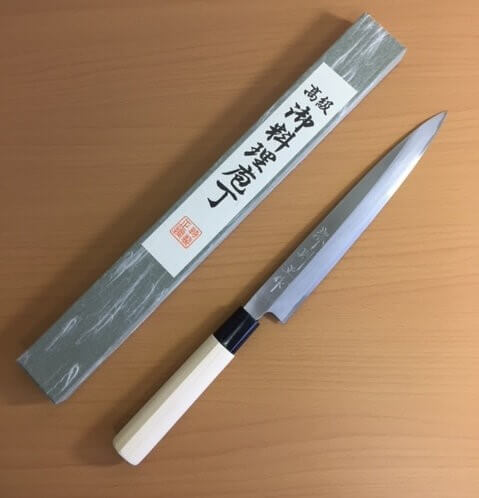
It’s all about ‘Making the Cut’
Picking your Japanese knife can be boiled down to picking a ‘cut.’ By this I mean picking a knife based on how it cuts – how much, how well, and for how long.
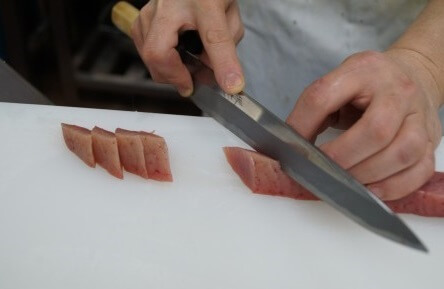
(Image: obana-nara.jp)
How much you want to cut will determine what size to focus on. How ‘well’ you want it to cut will determine the steel, forging and grinding method, and last but not least the shape you will want to consider. Thinking about for how long you want to cut will narrow down the shopping list even further by considering the maintenance and care required by a traditionally forged Japanese knife.
Each of these factors influences the performance and actual ‘feel’ of the cut – most importantly, it determines the knife’s ability to cleanly and easily slide through your ingredients. So join me as I run down the importance of the cutting ability of the sharpest Japanese knives around. Make the right choice and you could find yourself pulling paper thin slices off of the rare and deadly fugu puffer fish like in the picture below! How cool is that?
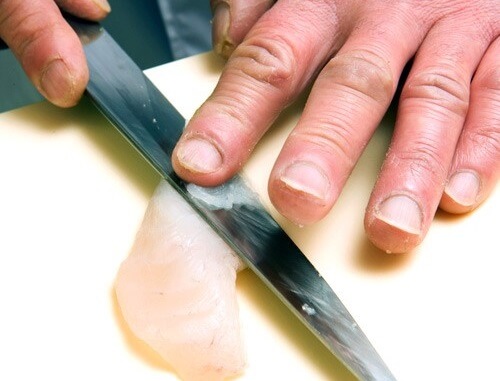
(Image: dancyu.com)
How ‘Much’ Can It Cut?
Japanese kitchen knives come in a variety of sizes. Each size has its own legacy and history – many have roots going back centuries and nearly all can be traced to the profession of samurai sword making. From the ultra-specific and ultra-long fugu-hiki blowfish ‘puller’ to the jack-of-all trades gyuto chef’s knife or his smaller cousin the santoku general purpose knife, Japanese kitchen knives come in many forms. (see our gyuto and santoku coverage here: LINK) Their ‘ability’ to cut will thus depends on how you measure that ability – or, what sort of materials you will be actually cutting.
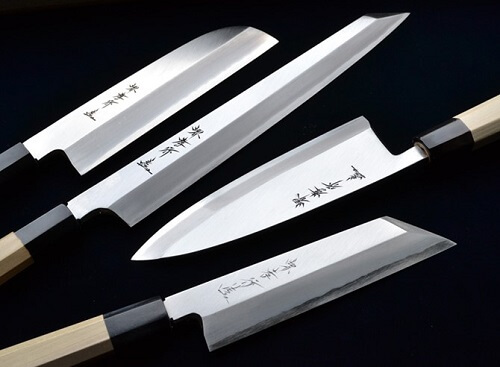
(Image: aoki-hamono.co.jp)
If you are vegetarian or vegan, for example, the raw power and speed of a na-kiri vegetable knife would quickly make it your best friend in the kitchen. The chopping action promoted by the tall, boxy blade and flat, long edge allows you to get through any leafy or root vegetable with ease. Meanwhile the traditional wa-handle usually appended to them works to balance out the feel of the blade in your hand. See our coverage of the na-kiri knife here: LINK

(Image: livingut.shop)
As you can see, determining the use of your knife will determine the value of its cutting ability. A pork loin-slicing, beef rib-reducing gyuto chef’s knife won’t get much work done in a vegetarian household. Likewise, a yanagiba sushi knife doesn’t do much for a rancher with a love for rib-eye. Determining the right tool for the right job is step number one.
For fish, the ultimate, traditional sushi chefs insist on a single-bevel (right handed) knife with ample legth for ‘pull’ cutting. If you are more used to western chops or sawing of beef, then a double-bevel (ambidextrous and easier to sharpen) gyuto chef’s knife with a western handle is going to feel perfectly comfortable. In a way, these knives are apples and oranges – so remember to identify your uses and recall your diet when shopping around.
Here is a simple chart:
| Vegetables | Santoku, Na-kiri, Gyuto, Deba knife, Petty Knife |
| Meat | Santoku, Gyuto, Suji-hiki |
| Fish | Santoku, Deba knife, Fugu-hiki, Yanagiba knife |
How ‘Well’ You Want Your Knife to Cut: Balancing Strength, Versatility, and Ease of Maintenance
As we have already established, what you want to cut will help you pick a type of Japanese knife. Next we have to determine what level of cutting ability you want.
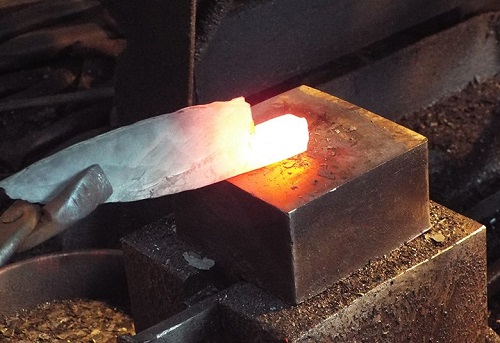
(Image: yoshikanehamono.com)
Officially, the best cutting Japanese knife (the sharpest Japanese knife) in the world is the rock hard, carefully ground and sharpened honyaki variant. (For an in-depth look at the king of Japanese knives, see our honyaki coverage here: LINK
The trouble with honyaki pure carbon steel knives is that while they are the hardest around (that’s what allows them to take and hold such a thin, sharp edge!), maintaining them requires serious care and attention. Plus, being so rigid, they are susceptible to chipping and breakage – even snapping in two! Add to this their vulnerability to rust and bacteria and you’ve got a needy worker on your hands. That being said, the cut is second to none!
So it’s clear you will have to strike a balance if you are looking for an at home workhorse that you won’t have to sweat over when cleaning up – or when you accidently knock it off the countertop trying to catch a glimpse of the TV in the next room!

(Image: freshome.com)
That’s where Japanese stainless steel knives come in. Offered in all the same shapes and sizes as the traditional, age-old knives which have kept Japan’s forges alive since the disappearance of the samurai, stainless steel knives are now affordable and available worldwide. With the world-leading technology put to use by knife makers like Fusachika, Kai, Seki, Global, and Toshu, stainless steel knives are quickly approaching levels of hardness (and sharpness) comparable to the legendary honyaki. For an overwhelming majority of household cooks then, the sharpness of a Japanese stainless steel knife is perfect.
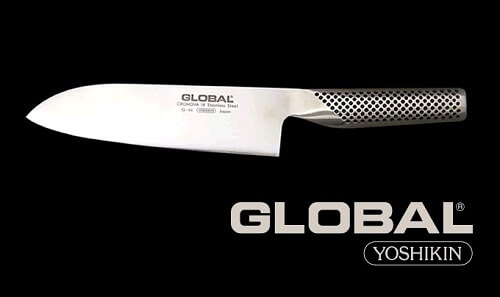
A small sacrifice in sharpness goes a long way to ensure your daily-driver is a workhorse that won’t quit. Plus, you can twice as much in the kitchen enjoying the perks of an ultra sharp Japanese knife without the hassle of a picky, particular maintenance regiment: stainless steel can be washed with detergent and left to drip dry!
Sharpness and Maintaining the Edge
As we have seen, a hand-forged honyaki will cut like nothing else; and while with the right tools it is easy enough to learn and even master the art of sharpening a stainless steel Japanese knife, not everyone is up to the task. This brings us to our final point when choosing which level of razor-sharpness is right for you.
It very well might be that you are happy with a short-term investment that requires almost no second thought or maintenance. In which case, you can turn to Kyocera’s ceramic knives with their easy to use handheld sharper.
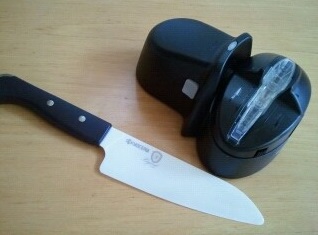
(Image: blog.kisetsu-o-mederu.com)
Or maybe a little bit of love and care is something you are willing to invest in to get a long lasting, razor sharp cut from your Japanese knife. In that case, a dual-bevel stainless steel knife should be just right. These require sharpening, sure, but they are easy to learn on and relatively cheap to have serviced by a professional.
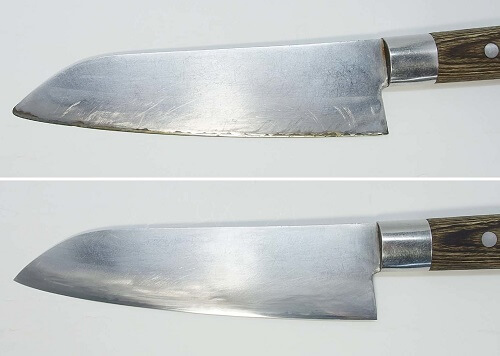
Recognizing Your Needs and Budget
After recognizing your needs in the ways I described above, you will want to a set a budget. after that you are set to start shopping. No matter what conditions you come up with, I’m certain you will be able to find a knife that provides all the legendary cutting power and sharpness Japanese knifemakers are so well known for. What’s more, in today’s world of global online shopping, you won’t have to even leave home!
As a start, why not check out our online shop. We’ve got a great selection of Japanese knives from the affordable stainless steels to Damascus and even honyaki. While you are at it, take a look at our blog for a number of posts to help you on your way finding the perfect knife for your needs. Based on today’s discussion, I remain firm in my belief that a Japanese stainless steel knife is the perfect balance between worry-free usability and the legendary cut and sharpness of the nation’s best blade masters.
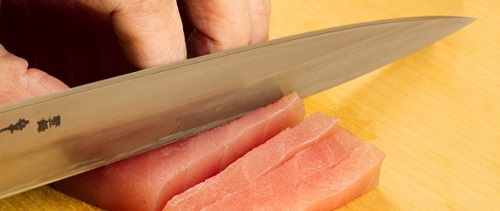
(Image: nigara.jp)
That brings us to our final point: remember, you don’t have to sacrifice legendary Japanese sharpness for ease of use or even cost – you just have to identify your needs and find the right fit for you.

Author - Jay
In my spare time I enjoy watching baseball, tasting local cuisine, and exploring by road and rail. Having lived in several cities around the world, I have an appreciation for local as well as international histories and cultures. Excited by cultural and social exchange, it is my hope that this blog will help promote an interest in Japanese traditional wares and practises by introducing you to their history and meanings.

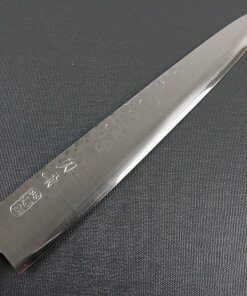
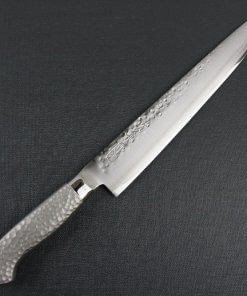
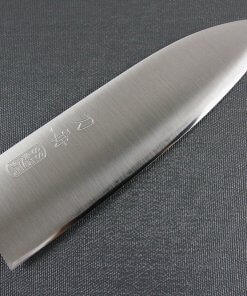
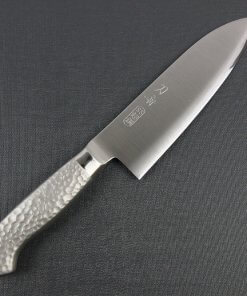
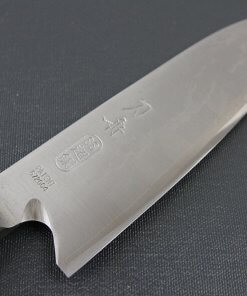

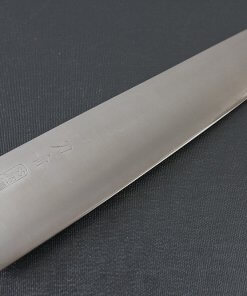
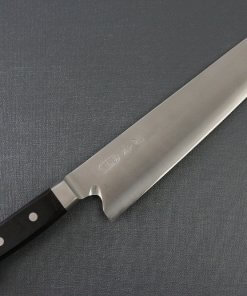
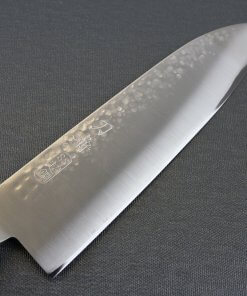

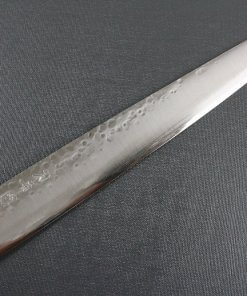
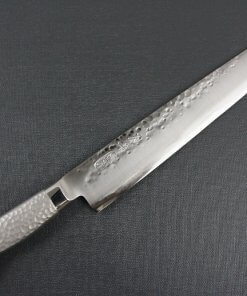

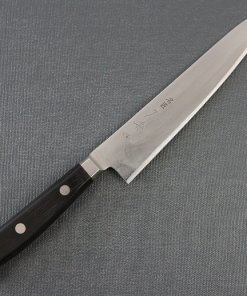
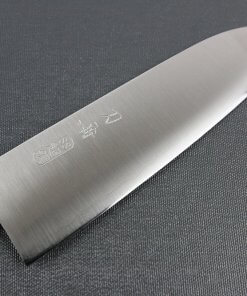
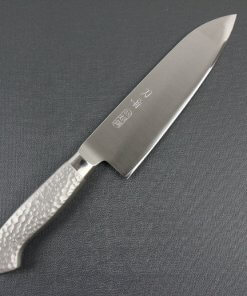
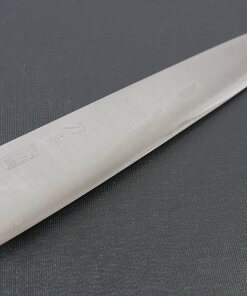

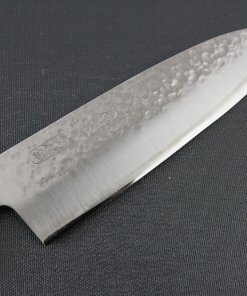
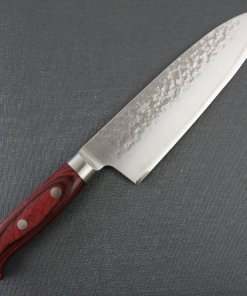
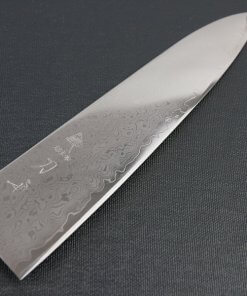

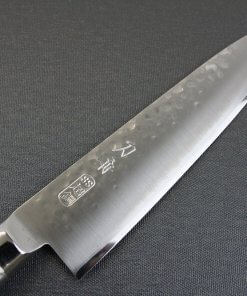
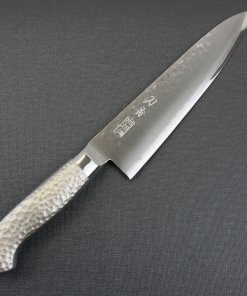
About Orientalsouls.com
Learn and Buy Japanese Craftsmanship, Tradition & Culture
OrientalSoul.com is the online shop where you can buy traditional crafts of Japan.
We only sell selected authentic products in which true spirits of Japanese craftsmanship exist.
You may be able to find similar products in other shops for lower prices. However, we sell products based on fair prices that worth labor and value of experienced craftsmen.
In addition, we introduce stories about product history, how a product is made, what makes it different from others, and how the product enriches your life!